Bligh Graham Architects
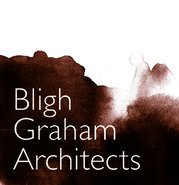
Bligh Graham Architects is a multi-award winning small design based practice. Each project is treated as unique and special with solutions sought that are pragmatic, poetic and sustainable. While we have the skills to professional service projects from small to medium our size ensures excellent and dedicated client service.
Driving directions to Bligh Graham Architects on map
Bligh Graham Architects on Google Maps
Projects:



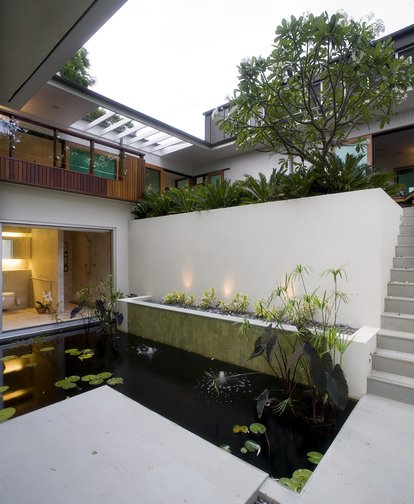
Fig Tree Pocket River House
Brisbane, 2009
The southern aspect and very steep grade of this dramatic site overlooking the Brisbane River presented major challenges to the ability of the house to take advantage of the river views and still access northern light and winter sun into most rooms. The ‘C’ shaped courtyard plan resolved this problem by providing all the principal rooms including those overlooking the river with a northern aspect. The courtyard also enables summer breezes to penetrate the house and creates an intimate garden sheltered from the winter south westerlies and summer storms coming up the river. This courtyard space is hidden from view until being revealed upon entry into the house proper. In contrast to this captured landscape the outdoor room at the end of the entry axis launches out 6m above the ground and enables breathtaking views up and down the river. In the courtyard the ground plane is reconfigured to yield both an upper garden which relates to the living level and a lower pond which is overlooked by the main bedroom suite. The drama of these spaces is amplified by the flanking retained pool which includes a window in its side wall.

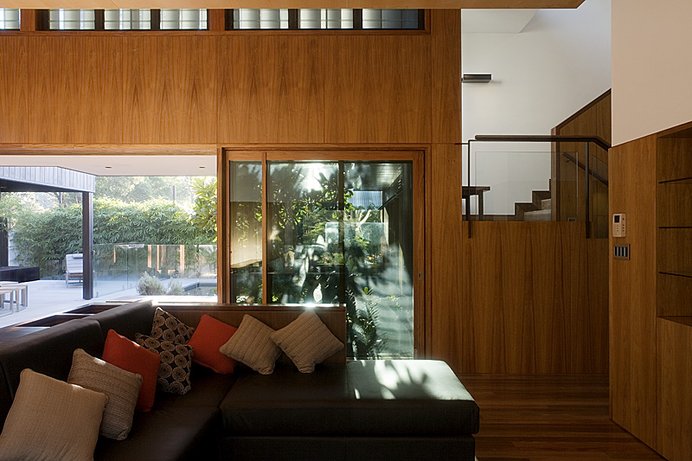
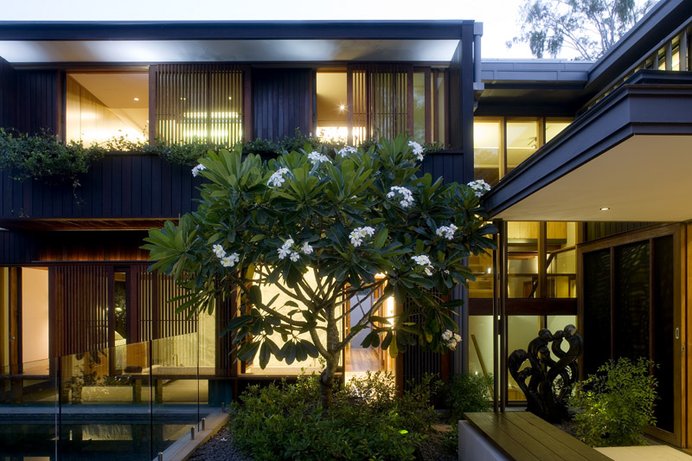
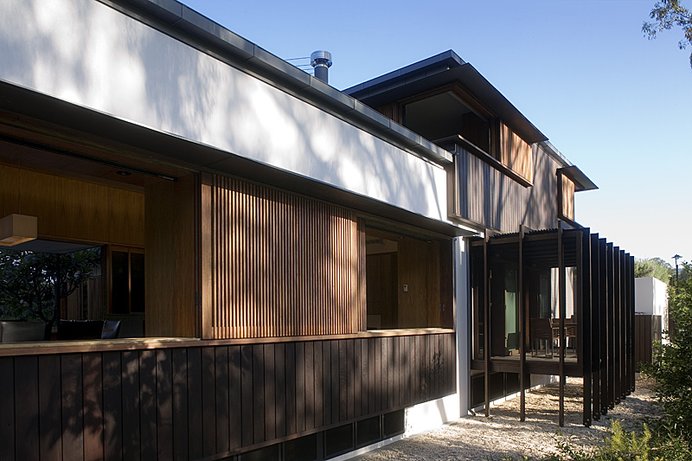
Samford House
Brisbane, 2008
This house is situated on a modest 600sqm block situated on the edge of a semi-rural village and overlooks the adjoining bush reserve. The design plays on the notion of the house being on the edge or transition between the city and the country with rendered walls (city) overlapped by the timber and zinc envelope over (bush). This overlap of city and bush is reinforced by the layering of hanging gardens and vine trellises which further blur the building into the bushland backdrop. The simple palette of external materials is echoed in the interior. While the exterior is robust in nature the interior is warm and rich with a reticence suitable for the housing of a large artwork collection. The L-shaped plan of the house creates a N-E facing courtyard ‘ a hidden garden. The principle spaces of the house are constructed as the threshold between the miniature landscape of the courtyard garden and the expanse of the bushland beyond. Large windows and doors disappear to seamlessly to connect the inside to outside ‘ simultaneously intimate and grand.
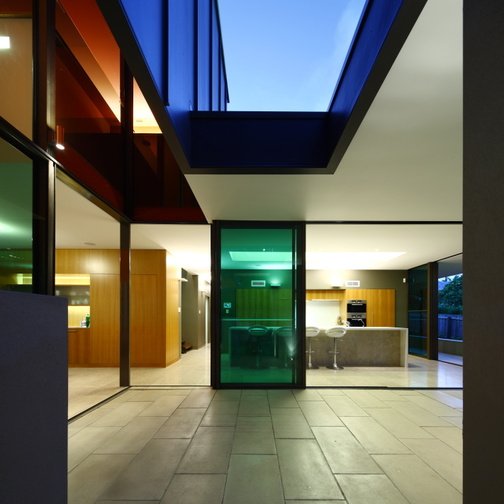
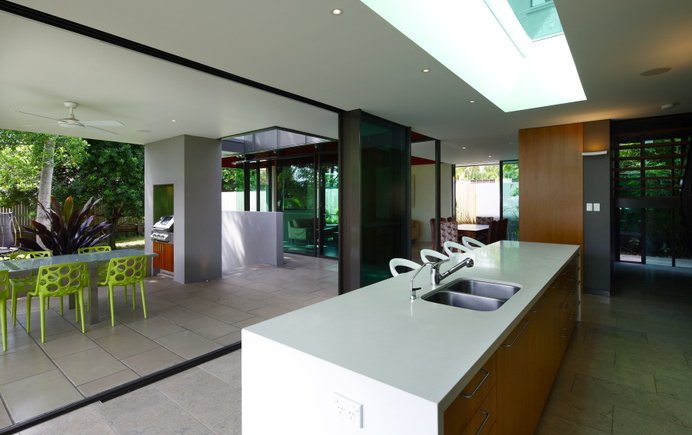
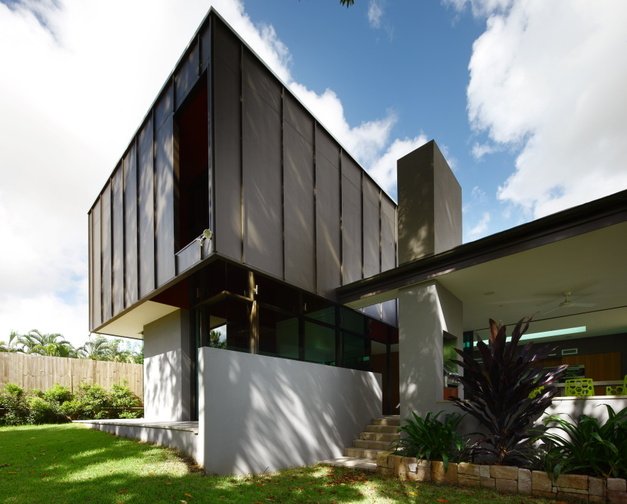
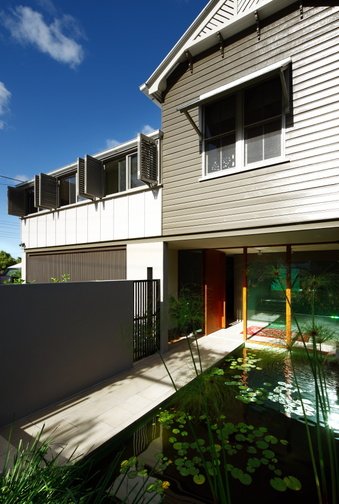
Bulimba House
Brisbane, 2010
This renovation amplifies the intrinsic nature of the Queenslander house as an island hovering over the landscape by weaving a new constructed ground under and through it. The sequence of spaces begins with an entry pond that draws in under the existing houses’ gable. A dramatically dark corridor leads you to the light filled extension at the rear of the house with a NE facing terrace overlooking the rear yard. The sequence that began with the entry pond will be terminated by water in the form a future pool to be built beyond the new living space. The main form of the extension is a 2 storey box – part mezzanine/part double height space. The upper portion of the interior is painted a bold burnt orange which glows like a lantern when lit at night. By having the bedrooms upstairs in the existing Queenslander and the new living spaces under, the livabilty of the original house is dramatically improved. The living spaces connect with the ground and are significantly cooler. The bedrooms retain privacy and security.


